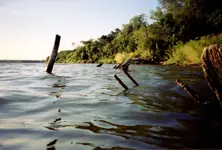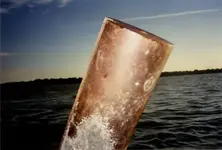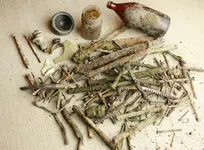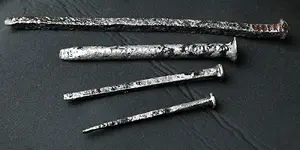garren
Hero Member
- Joined
- Mar 15, 2008
- Messages
- 509
- Reaction score
- 1,221
- Golden Thread
- 1
- Location
- Fort Worth, TX
- 🥇 Banner finds
- 1
- 🏆 Honorable Mentions:
- 8
- Detector(s) used
- Minelab Manticore
- Primary Interest:
- All Treasure Hunting
- #1
Thread Owner
I put this mailbox together tonight using a 16" elbow and short piece of A/C duct. I used photos from others on this forum as a guide. I know it's light and wouldn't hold up for coastal usage but I'm inland in the middle of Texas and we'll only be using this for one project. I figured it's practically disposable and we only have $38.00 in it.
I've never used a mailbox and assume that prop washing is fairly straight forward. However, I'm also aware that assumption is the mother of all "eff ups" So I thought I better come over here and ask some questions.
So I thought I better come over here and ask some questions.
The project is a 1920's era stern wheel steamer. I found it about 10 years ago but never gave it much thought. Recently and by chance I came across information that identified the boat. Having a name, I did little research and found out it had a little history to it. It sank in 1928. Its not that old and there wouldn't be anything of value down there but now that I know some history about it I want to recover something from it. Its local history for me so anything will do...a plate, a cup, a window latch... I don't care what we find.
It was 130 feet long and 32 feet wide and had an upper and lower deck. Also listed was a bar and restaurant. On some excursions an orchestra played and there was supposedly a dance floor on the roof of the upper deck.
Its no Florida shipwreck but it may be the closest I ever get to one..
Here's some questions:
Its in about 4' of water...given the size of my engine (75hp) and the light gauge of my mailbox, what RPM should we run?
There's about 3' of silt over the wreck...how long does it take to blow a 3' hole?
We can see part of a tank and some of the framework. Where should we blow the first hole? stern, middle or bow?
Looking at my pics, do you see anything I did wrong?
Are there any tricks or techniques we should use on this kind of project?
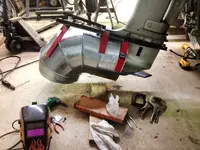
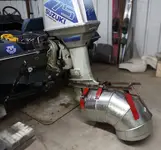
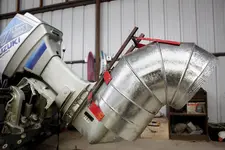
I've never used a mailbox and assume that prop washing is fairly straight forward. However, I'm also aware that assumption is the mother of all "eff ups"
 So I thought I better come over here and ask some questions.
So I thought I better come over here and ask some questions.The project is a 1920's era stern wheel steamer. I found it about 10 years ago but never gave it much thought. Recently and by chance I came across information that identified the boat. Having a name, I did little research and found out it had a little history to it. It sank in 1928. Its not that old and there wouldn't be anything of value down there but now that I know some history about it I want to recover something from it. Its local history for me so anything will do...a plate, a cup, a window latch... I don't care what we find.
It was 130 feet long and 32 feet wide and had an upper and lower deck. Also listed was a bar and restaurant. On some excursions an orchestra played and there was supposedly a dance floor on the roof of the upper deck.
Its no Florida shipwreck but it may be the closest I ever get to one..

Here's some questions:
Its in about 4' of water...given the size of my engine (75hp) and the light gauge of my mailbox, what RPM should we run?
There's about 3' of silt over the wreck...how long does it take to blow a 3' hole?
We can see part of a tank and some of the framework. Where should we blow the first hole? stern, middle or bow?
Looking at my pics, do you see anything I did wrong?
Are there any tricks or techniques we should use on this kind of project?



Amazon Forum Fav 👍
Last edited:



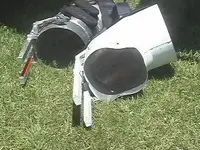
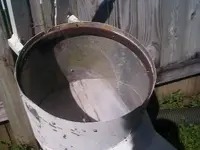
 Looking at the pic again it looks like a little less than half of the prop should be showing? Like
Looking at the pic again it looks like a little less than half of the prop should be showing? Like 